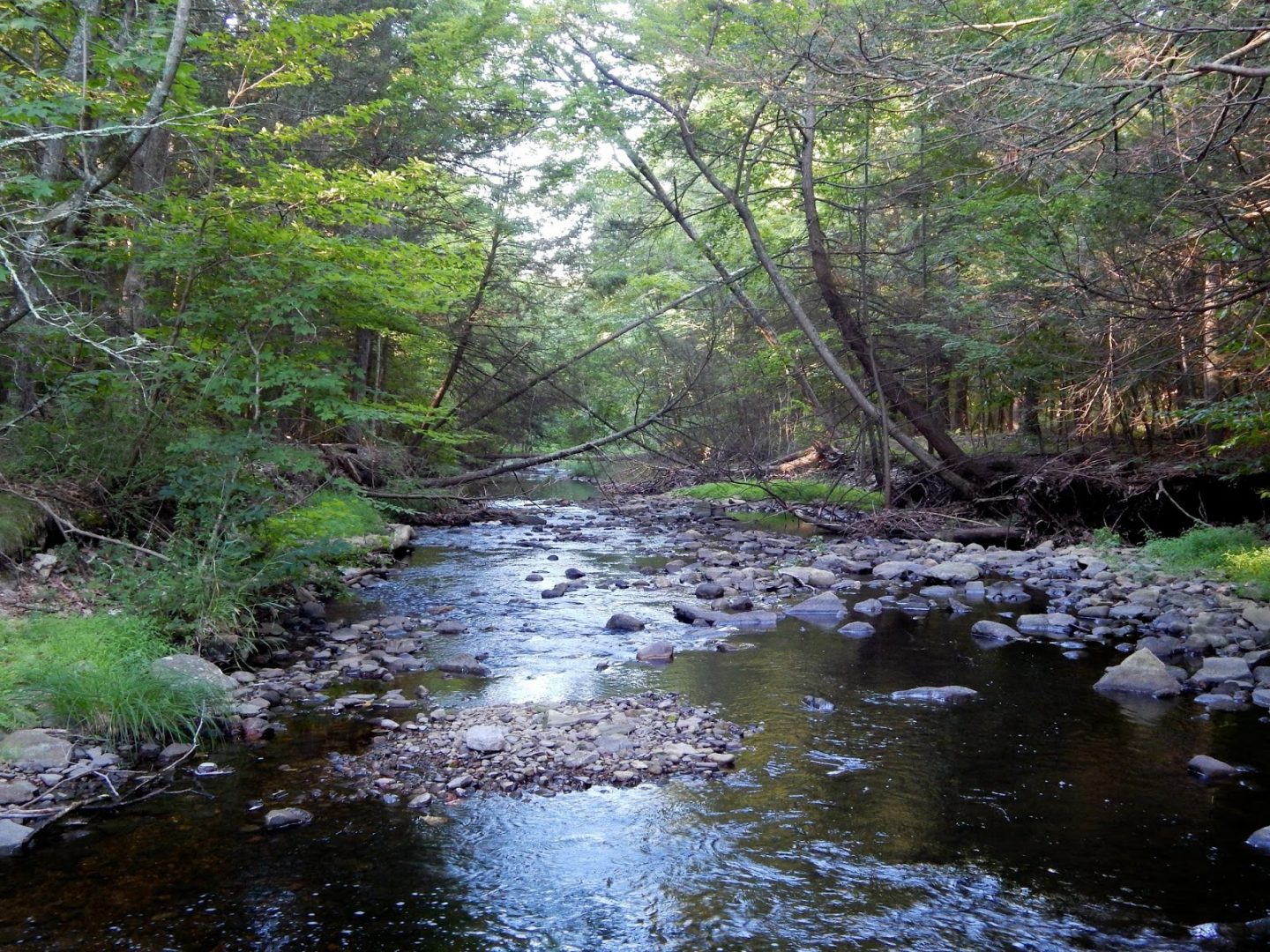Dr. John Rex spoke to a full house last Friday the 19th regarding the hydrology of small streams in north central British Columbia. Throughout his talk he mixed learnings from a variety of projects with policy work with government and industry to influence practices. It was a very compelling presentation.
Dr. Rex introduced tidbits of facts and the results of several studies that I wasn’t aware of. One is referenced in my title: Did you know that only one to two percent of rain that falls on a forest canopy moves into the stream channel? At first counterintuitive, it makes sense given the porosity of the forest floor. This leads to other interesting pieces of information about water flow changes resulting from disturbance of the forest canopy. For instance, studies have found that mountain pine beetle attack in the United States didn’t change spring peak water flows despite the impact to the forest canopy. However, as soon as the forest industry moved in to salvage the dead trees, there was a significant increase in peak flows occurring earlier in spring. This was also noted in BC in the Francois Lake area. Rita Winkler’s work looked at both peak flow and low flows in a harvested landscape. She found increases in early season peak flows were greater than projected and low flows later in the season were much lower than expected.
There were several aspects of the presentation that I enjoyed. I particularly enjoyed Dr. Rex’s sense of humour throughout the talk. He wasn’t an overt comedian, but he sprinkled jokes and self-deprecating dry humour effectively throughout his presentation. Dr. Rex presented a number of significant challenges that BC will need to grapple with as climate changes but didn’t present these in a heavy-handed manner. These provide good challenges for academia to contemplate and work to further understand and hopefully contribute to influence change. Including current and relevant facts about the state of significant drought levels across northern BC was timely and important to highlight.
Dr. Rex’s approach of working with industry, academia, First Nations and stakeholders is an aspect of his work that I would like to adopt in my work. I agree that it is important to collaborate and communicate with these many facets of the community in order to effectively transition research into practice and effect change. I was encouraged by Dr. Rex’s positive outlook.
Dr. Rex effectively responded to questions that were posed and even managed to include a topic area that could use further work – perhaps a student in the audience will tackle the question of assessing downstream cumulative effects of human development on water temperature! One question that I would have liked to ask is: Are there plans to continue the adaptive management cycle with respect to small streams? That is, to assess whether small stream management will change sufficiently to improve the outcomes for these streams both post-harvest and cumulatively across watersheds.


Recent Comments